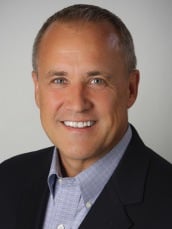
PHOENIX – While speaking before an audience of credit union industry executives, CUNA President/CEO Jim Nussle said he's observed that his credit union trade association is bloated and inefficient, according to eye witnesses and a transcript provided by CUNA.
Nussle, who took the top position at CUNA one year ago, made his remarks during the Sept. 24 general session at the CUNA Community Credit Union and The Federation 2015 Annual Conferences, which took place at the Sheraton Downtown from Sept. 22-25.
Recommended For You
CUNA media representatives later clarified Nussle misspoke and was referring to criticism he's heard from others as he spent the last year asking questions about how to improve the organization.
Nussle, a former Republican congressional representative from Iowa, also told attendees that CUNA is cutting credit unions' 2016 dues and resolves to spend 100% of the dues payments on advocacy, which he called the association's primary focus. The announcement was met with scattered applause.
"We will still do other things and charge for them to support them, but when it comes to dues, we are going to regain and keep our focus on advocacy," Nussle said.
He said CUNA had "flattened the staff levels" and reorganized to make itself more efficient as well.
Nussle put his comments in the context of growth, which he said is how credit unions should define winning.
"We want to grow because we want to serve more people," Nussle said. "The task of advocacy is to break down and prevent that from happening."
He told executives that CUNA and similar trade associations sold a lie to their members – that if their members would hire people like him and send a big staff to Washington, they would be able to make things change.
Nussle said that was not true, and pointed to the American Association of Retired Persons and the National Rifle Association as organizations that had learned the importance of fully involving their members in their advocacy efforts.
He also described the current struggle between banks and credit unions as a more or less equal fight. Bankers could bring roughly 6,000 bank CEOs to their lobbying efforts and credit unions could bring roughly the same number of CEOs.
"But I don't want an equal fight," Nussle said, adding he wanted a fight that included credit union board members, employees and credit union members themselves, all of whom would ensure their local members of Congress and state representatives know what credit unions do and the change they bring.
"The missing part of the message, the part that keeps us from just sounding like bankers, is the why," Nussle said.
Martin Eakes, president/CEO of both the Durham, N.C.-based Self-Help Credit Union and Modesto, Calif.-based Self-Help Federal Credit Union, which together have $1.3 billion in assets and roughly 120,000 members, stirred up the session with a difficult but inspiring talk about the future and mission of community credit unions.
Eakes shared data that showed in 2014, 60% of the nation's credit union members belonged to credit unions with more than $500 million in assets, and that by 2034 or sooner, 90% of credit union members would belong to credit unions with more than $500 million in assets.
The result, he said, would leave smaller credit unions marginalized and largely irrelevant outside of some small niches they may have carved out for themselves.
To prevent this from happening, Eakes said small credit unions should adopt new mobile banking technology as soon as possible, strive to put at least half of their assets in residential mortgages and increase their asset ratios per member.
"The fact is, auto loans alone are not going to do it," Eakes said, noting that mortgage loans have a 40% greater impact on a credit union's bottom line than auto loans, and that a higher ratio of assets per member is instrumental in helping a cooperative reduce its average costs and gain more sustainability.
© 2025 ALM Global, LLC, All Rights Reserved. Request academic re-use from www.copyright.com. All other uses, submit a request to [email protected]. For more information visit Asset & Logo Licensing.






